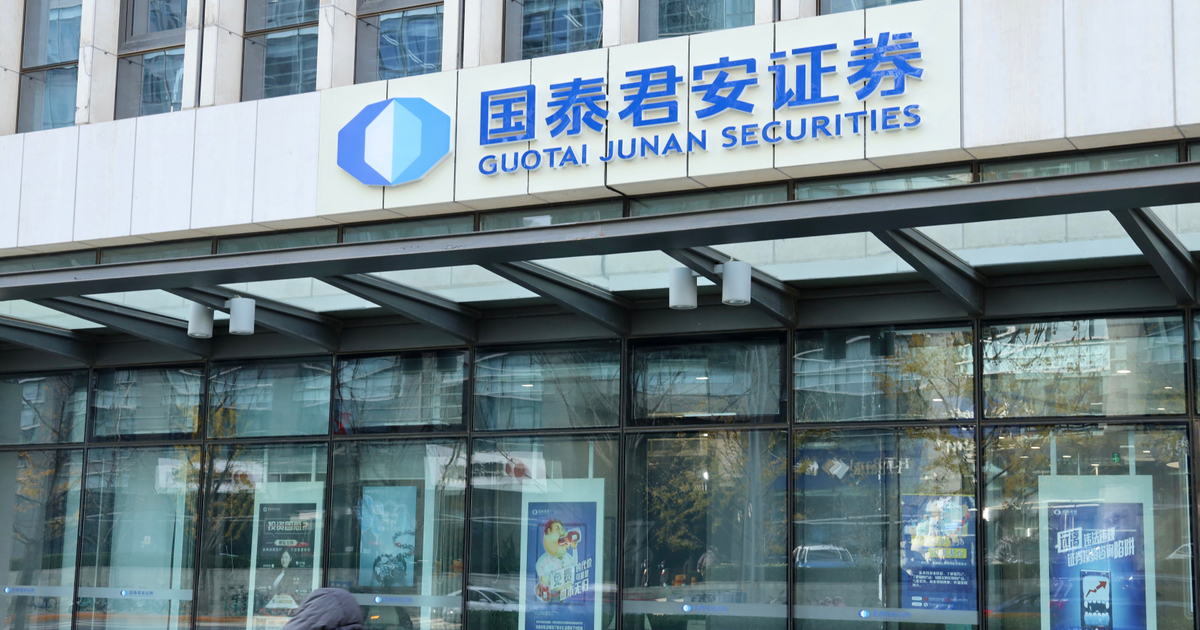3 ways hiring this 'under-tapped pool' of talent can benefit Asia's workforce
How can employers in Asia continue to attract and retain talent? The answer lies in this "under-tapped pool" of talent — individuals with disabilities.

Businesses around the world have been facing labor shortages as many people quit their jobs — and Asia is no exception.
A 2021 Mercer survey found that employers from Malaysia, Indonesia, the Philippines and Thailand observed a higher turnover rate, especially at the mid-career level, when compared with previous years.
The Great Resignation isn't ending any time soon, so how can employers in Asia continue to attract and retain talent?
The answer lies in an "under-tapped pool" of talent — individuals with disabilities, said Joni Simpson from the International Labor Organization (ILO).
People with disabilities include those who have long-term physical, mental, intellectual or sensory impairments, according to the United Nations.
"There are an estimated 472 million persons with disabilities of working age in Asia but almost two thirds of them are outside the labor force," said Simpson, who is a senior specialist for gender, equality and non-discrimination.
The population-to-employment ratio for people with disabilities in Asia is only 28%, said ILO's Joni Simpson.
Pekic | E+ | Getty Images
According to the latest guide for employers published by ILO, companies in Asia struggle with disability inclusion owing to lack of awareness and prevailing stereotypes.
"Some of the most common assumptions and fears are that people with disabilities are able to perform only routine repetitive jobs, that they have low productivity and a high accident rate, and that adaptations to the workplace will be costly," it said.
But Simpson says that highly skilled workers with disabilities are "out there" and "wanting to find jobs" — and it is up to companies to step up their diversity-hiring practices.
Statistically, more than one billion people in the world have disabilities ... within that number are countless talented and gifted individuals who are more than able and willing to support, outperform and even lead their peers.
Bernd Starke
Deutsche Bank
How can hiring those with disabilities benefit Asia's workforce? CNBC Make It finds out.
1. Competitive advantage
Diversity is increasingly important — 76% of employees and job seekers report that a diverse workforce is an important factor they consider when evaluating companies and job offers, according to a Glassdoor survey.
Bernd Starke, Deutsche Bank's head of DACH (Germany, Austria and Switzerland) corporate coverage for Asia-Pacific agreed, saying that diversity and inclusion rank highly, especially for the "younger generation of top talents."
"For successful organizations to attract top talents, it is therefore imperative to have an inclusive hiring culture that embraces people with disability."
Starke is also the head of dbEnable Singapore, which runs a "Work Placement Programme" offering student interns with disabilities an opportunity to learn about bank operations.
Since the program was launched in 2016, five interns have been hired as full-time staff at the bank.
For successful organizations to attract young, top talent, it's imperative to have an inclusive hiring culture that embraces people with disabilities, said Deutsche Bank.
Luis Alvarez | Digitalvision | Getty Images
"Statistically, more than one billion people in the world have disabilities. But it is often overlooked that within that number are countless talented and gifted individuals who are more than able and willing to support, outperform and even lead their peers," Starke added.
ILO said in its report that in building a more diverse workforce, businesses stand to gain "competitive business advantage" when they broaden strategies and practices to include disability — as well as differences in gender, age, race and ethnicity.
In addition, it reported that companies have found that their reputation improved and profitability increased after doing so.
A 2018 study by Accenture found that businesses that actively seek to employ people with disabilities reported higher revenues, net incomes and profit margins than businesses that do not.
Simpson added: "That will play out towards clients as well - seeing this company as a company that's up to speed with diversity … and that can make an impact on their choice to work with them, their choice to to buy from them."
"There is a positive impact for both the internal staff of the company and the clients from outside."
2. Loyalty
The Great Resignation, which saw the mass quitting of workers during the pandemic, is an indication that job loyalty may be a thing of the past.
But according to Simpson, job loyalty is still strong among employees with disabilities.
"They're effective in doing their jobs and they also tend to be loyal to their companies. The turnover rates are lower in terms of the evidence that we have."
In the United States for example, an analysis by DuPont de Nemours showed that people with disabilities have equal or higher performance ratings, better retention rates and less absenteeism.
"Again, it can be in terms of other elements of diversity as well. Being appreciated makes you stay."
The loyalty that a company can cultivate among its staff will also extend to those who aren't living with disabilities.
"There is a level of satisfaction that comes with working for a company that gets [diversity] - I would say also relevant for other people. When you know your company values you, is ready to support you … you will thrive and give your best in the workplace," said Simpson.
3. Empathy in the workplace
The Great Resignation has also pushed companies to fine-tune their culture to "meet the expectations of professionals to be seen as human beings first", said LinkedIn in its 2022 Global Talent Trends report.
One way companies in Asia can foster this culture is through diverse and inclusive hiring.
As companies cater to and learn about the needs of individuals with disabilities, they also bring new perspectives to their teams.
Edwin Tan | E+ | Getty Images
"We are all a little bit more human, when we look out for each other. If you have a colleague in a wheelchair, you have to be more willing to help and support [him/her]," said Starke.
"When you talk to them and (find out) it takes them two hours in the morning to get to work … you just start to be a little bit more empathetic."
Simpson added that as companies cater to and learn about the needs of individuals with disabilities, they also "bring new perspectives to their teams."
"After all, we're all going to be there [experience disability] at some point in our lives."
How companies can get started
For Starke and Simpson, building a more diverse workforce starts with company leaders.
"Leaders set the tone. They need to be looking at their recruitment and make sure that they're not indirectly and unconsciously discriminating potential candidates with disabilities," said Simpson.
"The leadership has to make sure that people …. don't picture them as people who are in the job just for a quota."
A company's disability-inclusion policy should include provisions on recruitment, confidentiality, job progression, job retention and accessibility, said the International Labor Organization.
Edwin Tan | E+ | Getty Images
Starke stressed that as companies move toward hiring a more diverse and inclusive workforce, the end-goal should be about employment opportunities, "not charity."
"If we employ someone with a disability, it has to be on the merits of that person's capabilities and talents."

 JimMin
JimMin 
































